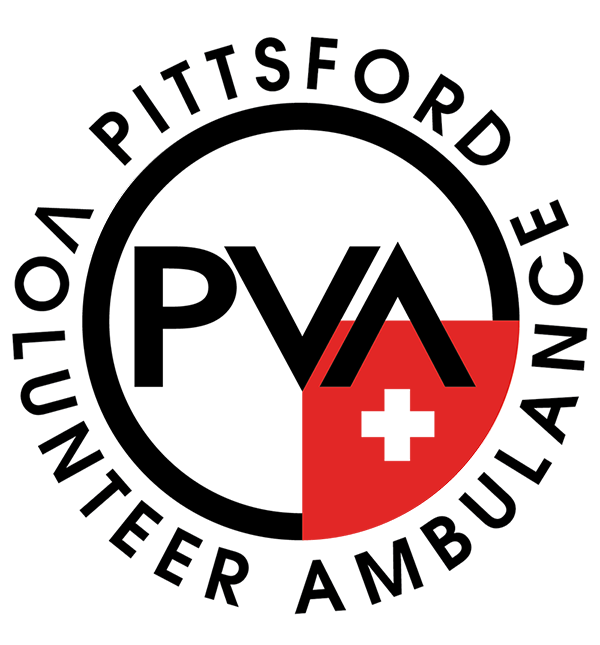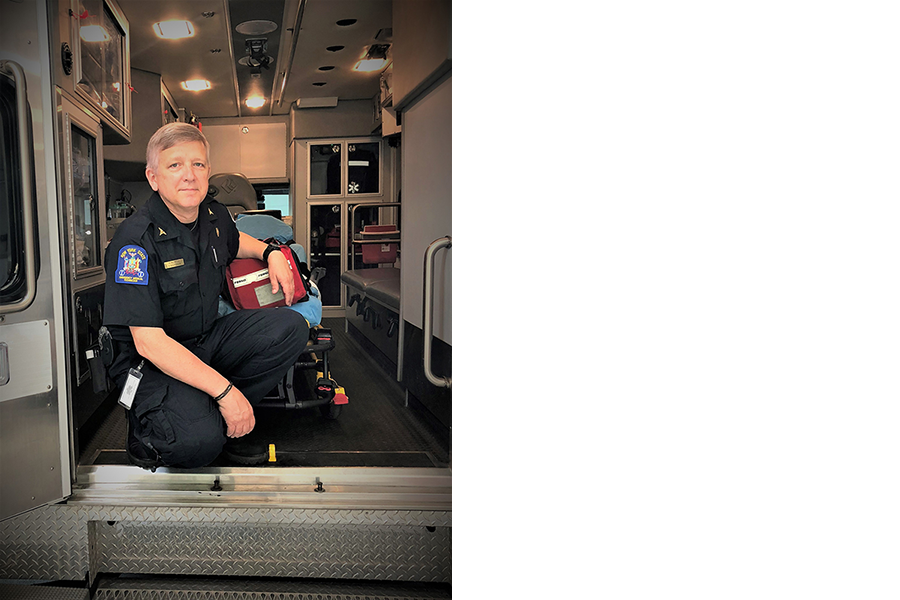Pittsford Volunteer Ambulance was founded in 1971; the creation had its genesis in tragedy. A young girl was struck on French Road in Pittsford and lay in the street for 45 minutes awaiting the arrival of an ambulance which had to be dispatched from the center of Rochester. She later died. Our earliest members saw a need for our community and filled it. Original members, like Paul, volunteered their time based on an innate desire to help people. “If I help alleviate someone else’s pain or suffering and in the process provide comfort and reassurance to them, then I feel good about what I’ve done.” These core values are one of the few things that have not changed since the early 1970’s.
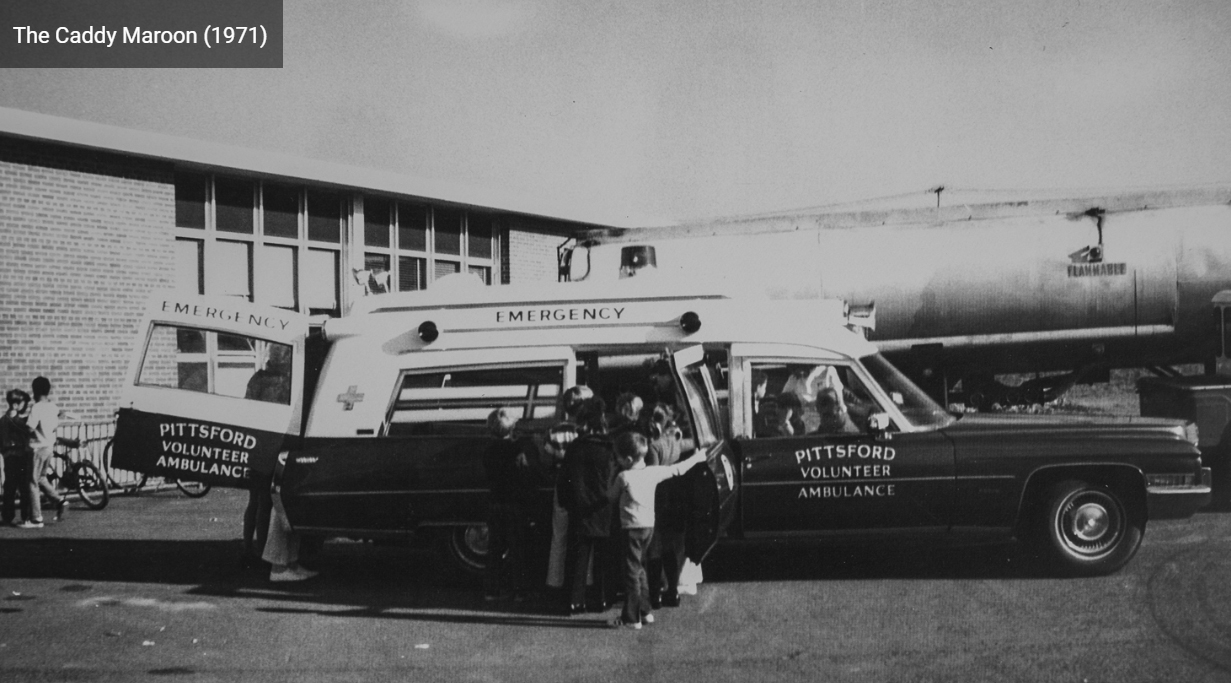
Pittsford Volunteer Ambulance first Ambulance was a 1971 Cadillac Ambulance, nicknamed “Caddy Maroon” by its members. “When I joined PVA in the later 70’s, the agency had just gotten rid of their Cadillac ambulance in favor of a van. People were not happy because even though there was more room now in the truck, the Cadillac had such a nicer ride.”
“And of course, we can’t forget the difference in gurneys! When I see one of those old aluminum framed stretchers now, the only word that comes to mind is ‘rickety’!”
“It’s hard to imagine anything about EMS that hasn’t changed.”
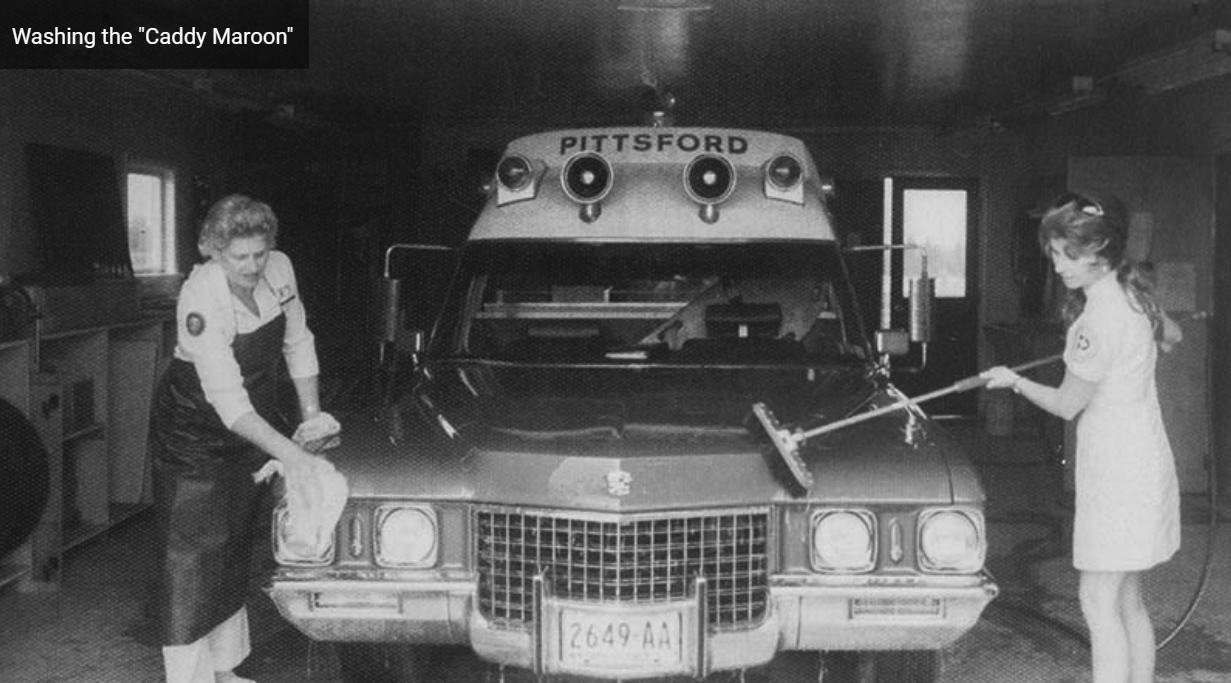
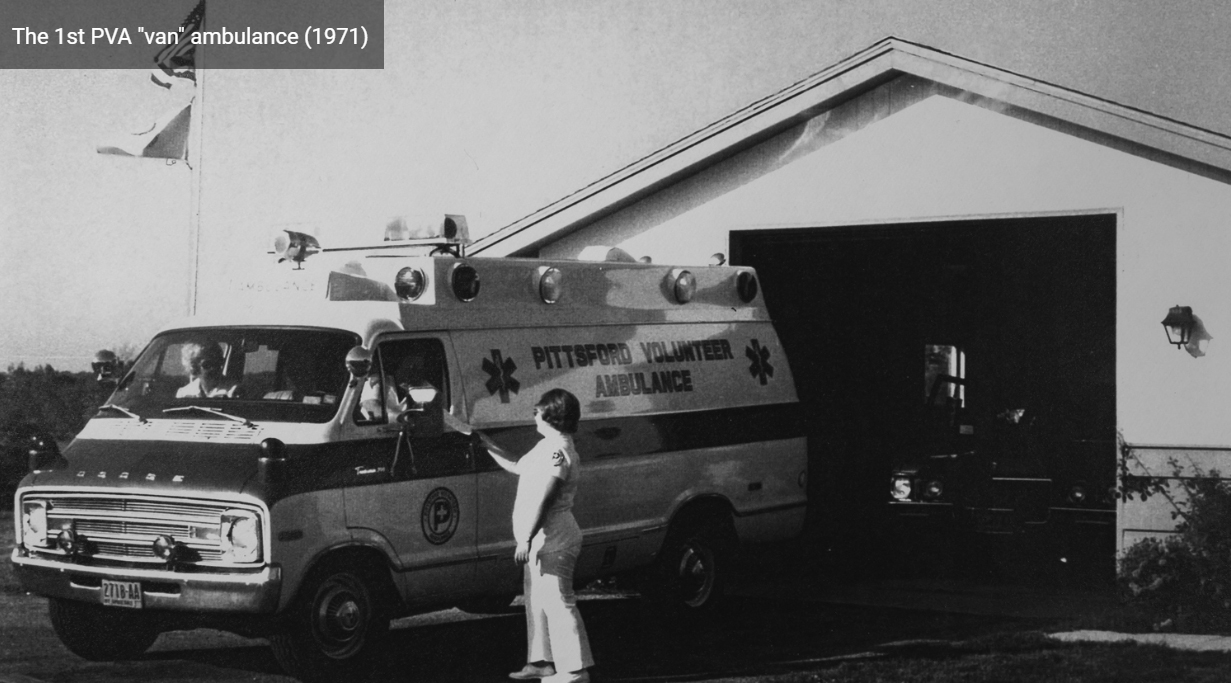
“Commit yourself to always training and always staying current. I still have the ‘textbook’ from my first EMT certification. It is about 300 pages with big double-spaced print and tons of full-page illustrations. Compare that to today where the textbook and workbook together represent over 2100 pages, with each page containing 2 to 3 times the content“
In the early 1970’s, educational efforts were put under way to train approximately 100 personnel (including many married couples) as Medical Emergency Technicians (MET), the forerunner of today’s EMT-B. The first course was held at Victor High School in the spring of 1971. It was a 45 hour course with heavy emphasis on triangular bandaging and childbirth – much different than today’s 160 or so hours spanning an array of medical emergencies our basic life support technicians are trained to manage.
“But probably the biggest surprise for me, was the shift to paid professionals in the industry. For decades we relied solely on volunteers. Each month, a huge sheet of paper was posted to the door of the dispatch room with hundreds of little boxes for each day/shift/position and each one of us took turns for 2 weeks being ‘crew chief’ and making phone calls to fill the shifts.” While we still have volunteers within our agency, the majority of our staff are paid professionals, making EMS a full-time career as opposed to an interest many dedicated free time to.
Paul has a successful career in sales, and it’s not lost on him how the two fields are similar. “My territory stretches from Maryland to New Hampshire and includes 8 states as well as the providence of Ontario, Canada. There is a certain part of EMS work that relies on sales skills, particularly communication. The ability to interact verbally with patients, ask the right questions, steer the conversation, and make small talk when appropriate are all skills that make for success in both fields.”
“You’ll meet a lot of great people who are serious about what they do and there is never any shortage of people who are ready to step up to help mentor and support you.”
